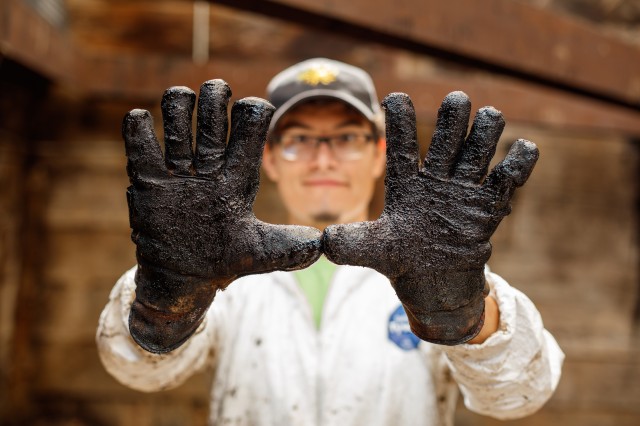General Info
Watch our excavators at work
Look down into an active fossil dig where scientists are uncovering everything from small plant seeds to giant ground sloths. From the Viewing Station, you can see deep into Pit 91 where thousands of bones of extinct animals like the western horse, saber-tooth cat, and dire wolf are jumbled together in pools of sticky asphalt. Throughout the summer, watch real paleontologists excavate real fossils from the gloopy, black asphalt and learn how scientists use these specimens to study what Los Angeles was like 25,000 years ago during the Ice Age. Science happens daily here at La Brea Tar Pits, so there is always something new to discover.
The story of Pit 91
Pit 91 wasn’t always a pit. Thousands of years ago, during the Ice Age, it was a shallow pool of sticky asphalt that trapped and preserved all kinds of plants and animals that got too close. Over a long time, dirt and sand washed over the pool, burying it, and the fossils stuck there, underground. Paleontologists discovered and started excavating Pit 91 in 1915—over a hundred years ago! The deposit is so rich in fossils that they still dig here every summer.
Early excavations focused on the bones of large mammals like giant ground sloths and saber-toothed cats but recently, paleontologists have been collecting microfossils, the tiny remains of plants and animals like seeds, twigs, snake bones, bird beaks, insect exoskeletons, and fish teeth. Digging at Pit 91 nearly doubled the number of species known from the Tar Pits and provided important data for understanding how climate change affected the habitat here. Pit 91 was the 91st hole dug by early paleontologists but when it comes to reconstructing ancient Ice Age ecosystems, it’s definitely Number 1.
Experience More
Make sure you explore everything the Tar Pits has to offer










